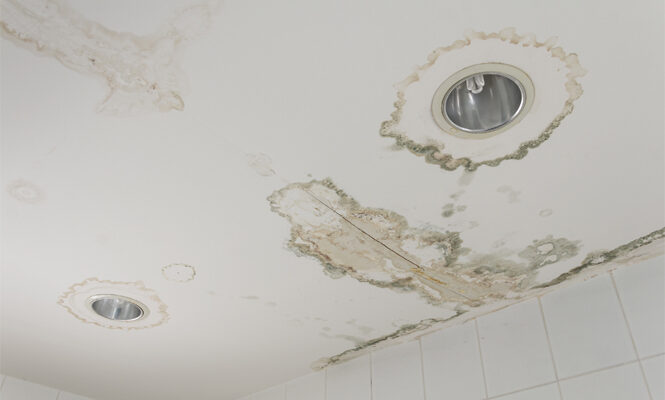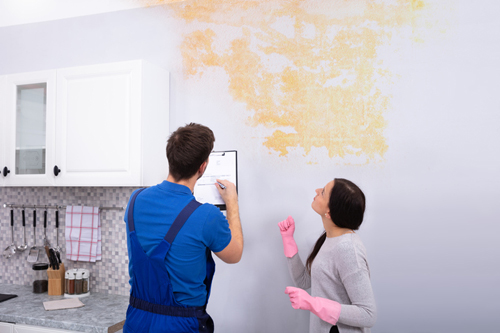Identify and Repair Water Stains Like a Pro
Identify and Repair Water Stains Like a Pro
Blog Article
The author is making a few good observations on the subject of How to Find and Repair Water Leaking in the Wall as a whole in the content followed below.

Water spots on walls are not enjoyable to the eyes. Your home needs to lack spots on the wall surfaces, roof, or floors. That is the optimal state of a house and its structures. Yet, occasionally it appears virtually inevitable to experience water discolorations on walls in residences.
Property owners living in moist regions regularly deal with the anxiety of water stains on walls. With accurate as well as well-shaped information on the causes of water stains as well as timely fixing procedures, you will certainly constantly be an action ahead of such events.
3 Usual Reasons For Water Spots on Wall Surfaces
As opposed to common belief, water spots on walls do not constantly originate from bad building products. There are a number of causes of water stains on walls. These include:
Poor Drain
This will prevent water from seeping right into the wall surfaces. This web links to extreme wetness that you observe on the wall surfaces of your structure.
The leading cause of wet wall surfaces, in this situation, can be a bad drain system. It can likewise be because of inadequate monitoring of sewer pipelines that go through the building.
Damp
When warm moist air meets with completely dry cool air, it triggers water beads to form on the walls of structures. This happens in kitchens and bathrooms when there is steam from cooking or showers. The water beads can stain the bordering walls in these parts of your home as well as infect other areas.
Moist or condensation affects the roof covering and also wall surfaces of structures. This triggers them to appear darker than other areas of the residence. When the wall surface is wet, it develops an appropriate setting for the development of germs and also fungi. These may have unfavorable impacts on wellness, such as allergies and also respiratory system disorders.
Pipeline Leaks
The majority of homes have a network of water pipelines within the wall surfaces. It constantly raises the feasibility of such pipes, as there is little oxygen within the wall surfaces.
Yet, a drawback to this is that water leak influences the walls of the building and also creates extensive damages. An indicator of malfunctioning pipes is the look of a water tarnish on the wall surface.
Water Spots on Wall Surface: Fixing Tips
Home owners would normally desire a quick fix when handling water discolorations. They would quickly recognize this is disadvantageous as the water stains repeat. Below are a few helpful pointers that will certainly direct you in the fixing of water stains on walls:
Pro Pointer
A houseplant in your house likewise enhances its humidity. If the residence is already moist, you might want to present houseplants with very little transpiration. An instance of appropriate houseplants is succulents.
Conclusion
No one wants to have water discolorations on wall surfaces in their house, it can take place to the best of us. This article offers you leverage, as you currently understand exactly how to handle this incident if it does occur.
It is constantly best to recruit specialist solutions to assist fix the problems in your home.
In some cases it seems almost unavoidable to experience water spots on wall surfaces in homes.
Contrary to preferred idea, water stains on wall surfaces do not constantly stem from poor structure products. There are numerous causes of water stains on walls. The water beads can discolor the bordering walls in these parts of your residence and also spread to other areas.
Right here are a few practical tips that will guide you in the repair service of water spots on walls:
What To Do About A Water Stain On The Ceiling
Why This is Important
Not only are water stains a cosmetic issue, but they can also indicate that there is a leak in the home that needs to be fixed. Sometimes, this may be the first indicator of a bigger problem brewing or may have been a one time leaky issue. It is important to investigate to make sure it is under control before you possibly have thousands of dollars in repairs.
Identify the Cause of the Water Stain on the Ceiling and Where to Start
It is important to identify the cause of the water stain on the ceiling first so you can fix it. Start first with the roof to see if there are leaky shingles or missing shingles, missing flashing, or weakened seals around roof vents. You may need to get on top of the roof to look or call a professional to check for you. It is possible that water is coming into the home from the roof. So you will want to have the professional take a look to see if this is the issue.
Also, look in the attic to see if there is a pool of water and that will also help you to know if there is water leaking into the home.
Radiator or Air Handler on 2nd floor
In colder parts of the country, there may be a radiator on the second floor. Radiators are used to keep rooms warm in the cold months and do wear out or need replacing. Does the radiator have a pool of water underneath it or any dripping? If yes, this could be the problem and causing the water stain on the ceiling. Check the model of the radiator and see if it is something you can do yourself or call a professional to check the body, pipe, and the valve for leaks.
The same is true for those who have an air handler on the second floor. Did your AC stop working? Or do you see water leaking? The drip pan (if you have one) on an HVAC unit collects the water and it can become clogged and back up. The float switch (again, if you have one) will activate as soon as the water reaches a certain level and shut down the HVAC unit, thus not allowing the water to continue to flow. Make sure the HVAC doesn’t become clogged and checking this monthly is a good idea.
Upstairs Bathroom Can Cause a Water Stain on the Ceiling
Bathrooms are often the culprit as caulking wears out after about 10 years and needs replacing. Is the home older than 10 years? This may be the issue. While checking the caulking in the bathroom around the sinks, toilets, and shower/bath, also check for black mold in the shower. Might as well rule everything out while you are looking for the source.
Other areas to look at are toilets clogging and overflowing. Do you see water near the toilet on the floor? This could be the seal is broken on the toilet and it needs replacing. Also, adding caulk to the toilet to connect it to the floor is a good idea. If the toilet is continuously running, you can shut off the water and do the water meter test.
Write down the number on the water meter and then turn off the water for three hours. When you turn it back on, check the number on the water meter. If it has increased, then you have a leak in the indoor plumbing.
Taking care of these areas is essential as sewer gases can also be escaping. Sometimes these issues will soak the ceiling below and clog in sinks and drains in the shower can also cause flooding in a bathroom.
Put a Drop Cloth on the Floor
With goggles on and gloves, put a drop cloth on the floor. Then, take 3 glasses of warm water and one cup of bleach and mix it together. Set up a ladder and climb up to the stain. Use a sponge that is soaked in the concoction to rub it on the water stain to get it to come off. Take a spray bottle of plain water and spray the stain to get the bleach mixture off. This is important because you want to be able to prime it and paint it. Take a dry towel and rub the stain to help it dry faster. Next, put painters tape around the ceiling if the spot is near the walls. Apply an Oil Based, Stain Blocking Primer
Apply an oil based, stain blocking primer that is mold resistant that matches the ceiling. It is important to put the primer on first so the paint doesn’t soak into the ceiling. If you have a flat ceiling, you can use a paint roller with an extension to apply it. Once the primer has dried, apply the paint. If you have a textured ceiling, a spray on primer might work better.
Choose a Latex or Alkyd Ceiling Paint
The latex ceiling paint is water-based and dries faster than the oil-based paints and also is thicker than wall paint. Make sure that the paint matches the ceiling color. Using a roller, paint it on over the primer and let it dry for up to four hours. Then, apply a second coat and let it dry. The second coat should make the stain disappear.
https://insideandoutpropertyinspectors.com/water-stain-on-ceiling/

As a reader about How to Find and Repair Water Leaking in the Wall, I think sharing that article was beneficial. Sharing is caring. Who knows, you might be doing someone a favor. Bless you for your time. Visit us again soon.
Real results? Dial! Report this page